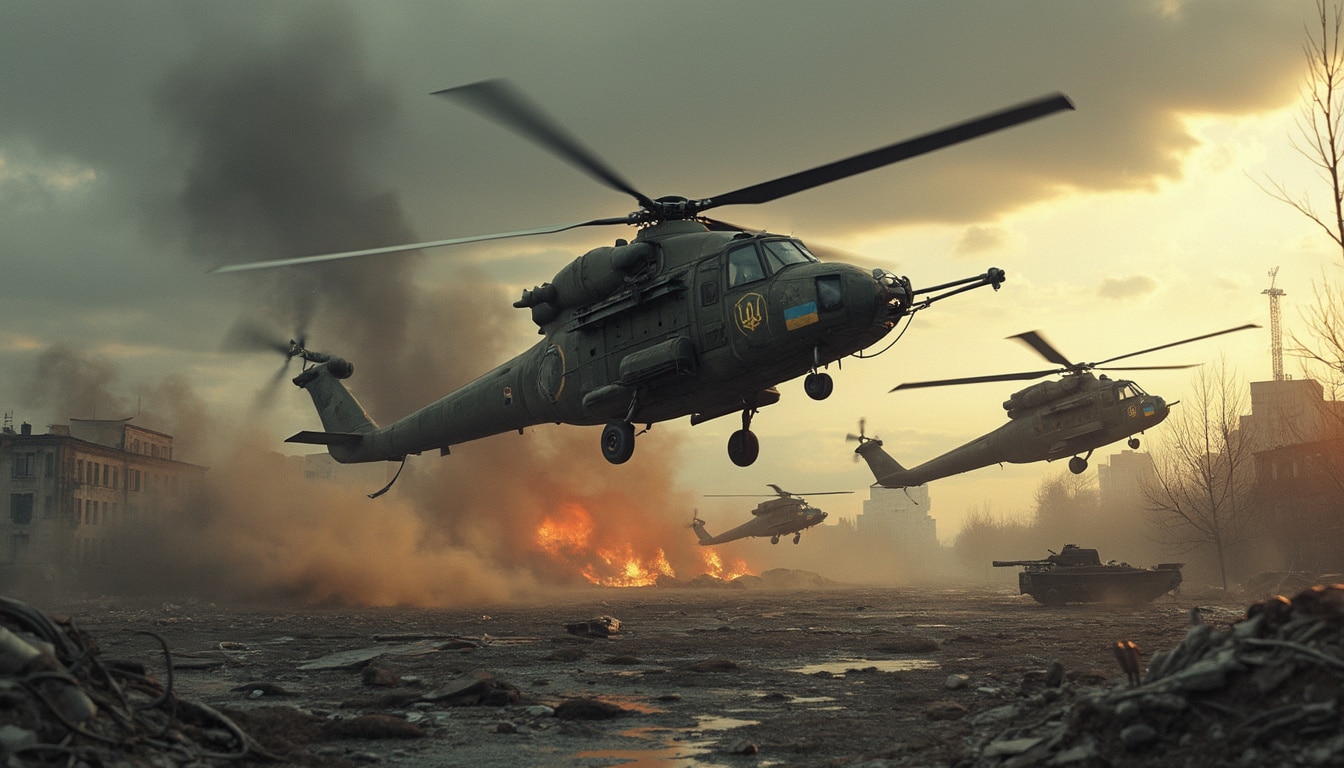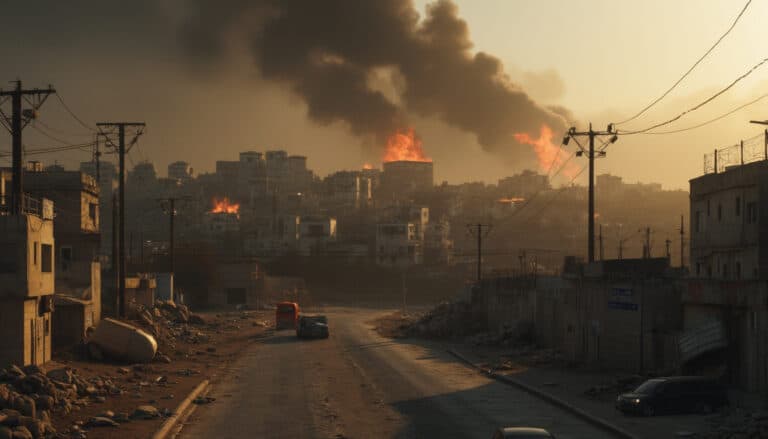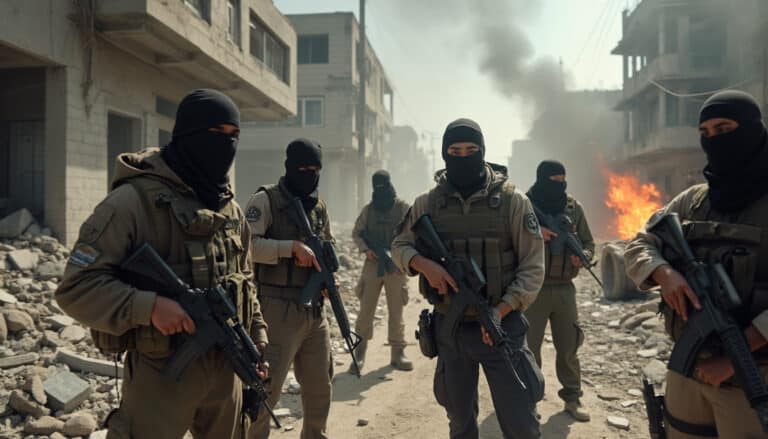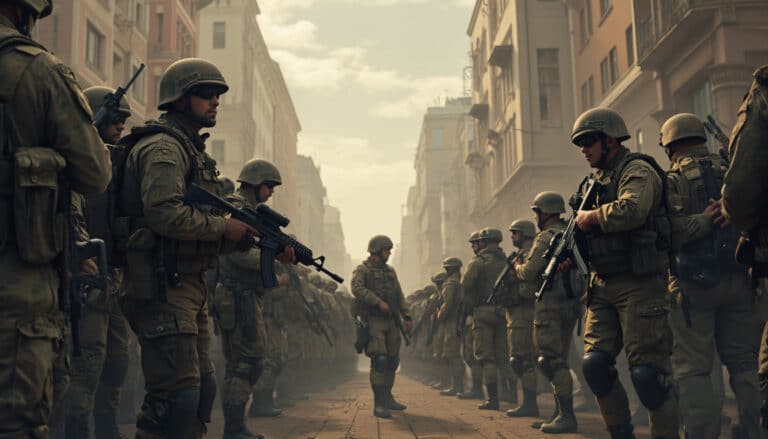Soviet helicopters dominate the Ukrainian sky, scanning every corner of the conflict-torn fields. Their imposing presence is a symbol of resistance against the invasion. Every morning, these legendary machines take off for vital missions.
For nearly forty years, these combat helicopters have been making several sorties daily, destroying enemy vehicles and opposing personnel with deadly precision. Through long-range attacks, they operate beyond the reach of Russian air defense systems. The Ukrainian air capability plays a crucial role in this conflict, supported by international military aid aimed at modernizing the fleet. Pilots aspire to newer models, offering better maneuverability and more powerful armaments to maximize the effectiveness of operations while minimizing risks.

Table des matières
ToggleDeployment of Soviet helicopters by Ukraine in the fight against Russia
As part of the current military confrontation between Ukraine and Russia, the use of Soviet-era helicopters has proven to be a crucial strategy for Ukrainian forces. These aircraft, although aging, continue to play a decisive role on the battlefield, providing essential flexibility and effectiveness in the face of Russian aggression. This article explores the various aspects of this deployment, its implications, and the future prospects for Ukrainian military aviation.
Why is Ukraine using Soviet-era helicopters?
Ukraine, in the face of the Russian invasion, has had to maximize the use of its available military resources, among which Soviet helicopters play a central role. These helicopters, such as the Mi-24, although old, remain effective for various combat missions. According to the commander of the 12th Army Aviation Brigade of the Ukrainian Army, these units conduct three to four sorties daily, targeting enemy vehicles and positions with remarkable precision.
These aircraft are primarily used for long-range attacks, allowing them to avoid Russian air defense systems. “We conduct combat missions to destroy enemy vehicles and personnel,” the commander stated. The ability of these helicopters to strike effectively without being detected is a major asset in a conflict where artillery dominates, with territories being conquered meter by meter under a constant barrage of missiles and shells.
The performance of Soviet helicopters on the Ukrainian battlefield
Despite their age, Soviet helicopters like the Mi-24 demonstrate impressive robustness and combat capability. Images captured during recent missions show these aircraft flying over cratered fields from artillery bombardments and launching missiles at Russian trenches. “We shoot at long range and clearly reach our targets, as if there was a cross on the intended point,” explains the commander.
This precise strike capability is enhanced by the use of modern technologies integrated into these older helicopters. However, the commander emphasizes an urgent need for modernization of the aircraft. “We need to master something new from abroad,” he asserts. Modern helicopters offer better maneuverability, increased munitions capacity, and more powerful weapons, thus allowing for more varied missions with better quality and reduced risk for pilots.
The technical and logistical challenges of maintaining Soviet helicopters
Maintaining Soviet helicopters poses several technical and logistical challenges. These aircraft, several decades old, require specific spare parts and technical expertise that are often hard to find. Moreover, the age of these machines means they are more prone to breakdowns or malfunctions in combat.
To address these difficulties, Ukraine has received significant aid from allied countries like the United States and the United Kingdom, which have promised or already provided new helicopters. However, integrating new technologies and training pilots on these new aircraft requires time and resources. The article on how to become a test pilot highlights the importance of thorough training to maximize the effectiveness of this modern equipment.
Impact of Soviet helicopters on Ukrainian military strategy
The use of Soviet helicopters significantly shapes Ukrainian military strategy. Their ability to conduct rapid and precise attacks supports ground troops and controls strategic areas. This tactical flexibility is essential in a war where territorial gains are often marginal but critical.
Furthermore, these helicopters allow for better coordination among different military branches. For example, integrating aerial reconnaissance data with ground operations improves the overall mission effectiveness. This type of coordination is often studied in articles like the one on what is gyrodynamics and how is it revolutionizing air transport, which explores innovations in the aviation field.
The advantages and limitations of Soviet-era helicopters
Soviet helicopters offer several advantages that keep them relevant on the current battlefield. Their robustness, troop and equipment transport capability, and their ability to perform various missions make them valuable assets. The Mi-24, for example, is not only a combat aircraft but also a transport helicopter, capable of moving up to eight soldiers in addition to its crew.
However, they also have significant limitations. Their outdated technology makes them less effective against modern defense systems and more vulnerable to electronic attacks. Additionally, their high fuel consumption and lack of comfort for pilots can reduce their effectiveness on long missions. These challenges are discussed in depth in analyses such as what makes a helicopter fly and how does it really work, which details the technical aspects of helicopters.
The future prospects for Ukrainian military aviation
Faced with the challenges posed by the continued use of Soviet helicopters, Ukraine must consider long-term solutions to modernize its air fleet. Acquiring new helicopters is a priority, but this requires international cooperation and significant investments. Modern helicopters not only offer better combat performance but also advanced navigation and communication systems that can greatly enhance mission effectiveness.
Moreover, the internal development of Ukrainian aviation capabilities could provide a sustainable solution. Investing in the training of pilots and engineers, as well as in the research and development of aviation technologies, is essential to reduce dependence on foreign equipment. An article on the National Guard supports states affected by hurricanes shows how targeted investments can strengthen national capabilities when needed.
The international support and integration of new technologies
Support from Western allies is crucial to enable Ukraine to modernize its fleet of helicopters. The United States and the United Kingdom have already sent additional equipment, and other countries are likely to follow. This support is not limited to material supplies; it also includes training for pilots and technicians, essential for the effective integration of new technologies.
Integrating modern technologies into Ukrainian helicopters could greatly improve their performance. For example, the use of advanced navigation systems and precision sensors would increase the accuracy of attacks and reduce risks for pilots. Additionally, adopting electronic warfare technologies could enhance the helicopters’ ability to operate in heavily defended environments.
The strategic importance of helicopters in the current conflict
Helicopters play a strategic role in the Ukrainian conflict, offering versatility that is often lacking in traditional fighter jets. Their ability to conduct reconnaissance missions, ground support, and direct attack makes them indispensable tools for Ukrainian forces. This versatility is comparable to that of fighter aircraft, but with greater operational flexibility.
Furthermore, helicopters can quickly reposition to respond to the changing needs of the battlefield, providing increased mobility that is essential in a dynamic war. The ability to swiftly transport troops and equipment to critical areas allows for reactivity and adaptability that are crucial for maintaining tactical advantage against a well-equipped Russian army.
Despite their age, Soviet-era helicopters remain an essential component of Ukraine’s military strategy in its fight against Russia. Their effective deployment, despite the logistical and technical challenges, underscores the importance of military aviation in modern conflicts. However, to ensure continued effectiveness and overcome current limitations, Ukraine will need to invest in modernizing its air fleet and strengthening its collaboration with international allies. The future of Ukrainian military aviation will largely depend on these efforts, thus determining the country’s ability to effectively and sustainably defend its territory.
























